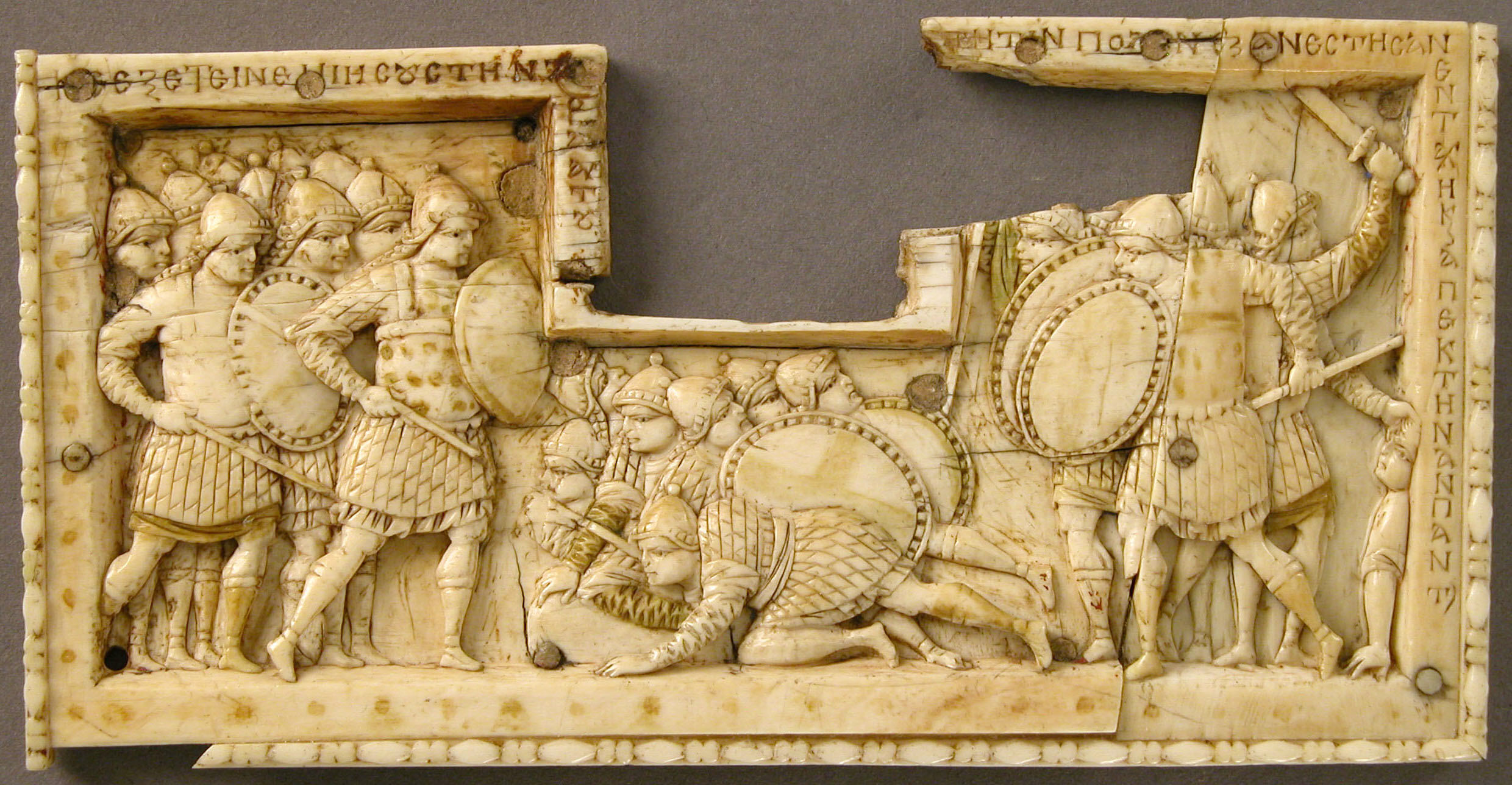
Try Amazon Fresh
A 10th Century Byzantine Casket.
The Destruction of Ai.
Metropolitan Museum of Art, New York



These panels are from a casket that illustrated Joshua’s conquest of the Promised Land and carry paraphrasings of texts from the Book of Joshua. The first narrative panel, designed to fit a lock plate, shows the capture of the city of Ai and is inscribed,“And Joshua stretched out his hand toward the city and they rose up quickly and they slew all” (Joshua 8:18–19). Dimensions: 6.9 x 13.7 x 0.6 cm
Source: Metropolitan Museum of Art, New York
Referenced on p36, MAA 89 Byzantine Armies 886-1118 by Ian Heath & Angus McBride
Detail from another 10th-century ivory panel depicting skutatoi, their large oval shields again much in evidence. The equipment portrayed differs from that of the last picture mainly in the addition of pteruges to the corselets. (Metropolitan Museum of Art, gift of J. Piermont Morgan 1917)
The last picture referred to is a Byzantine Plaque, 10th century, Scenes from the book of Joshua
The second panel shows the captive king of Ai, first bent in submission before Joshua and then, at the far right, hanged on a forked stake. The inscription reads, “And they brought the King of Ai to Joshua and they hanged him” (8:23, 29).
The third panel, showing emissaries from the Gibeonites approaching Joshua, has the inscription, “The Gibeonites displaying their torn clothes” (9:13). Joshua’s story was often invoked in the middle Byzantine period, when Byzantines identified themselves with God’s chosen people, likening their own military victories and defeats to those of the ancient Hebrews.